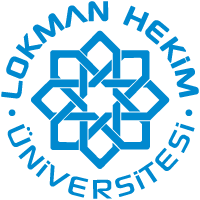A method for high-purity isolation of neutrophil granulocytes for functional cell migration assays

Göster/
Tarih
2019Yazar
Avci, Edibe
Akkaya-Ulum, Yeliz Z.
Yoyen-Ermis, Digdem
Esendagli, Gunes
Balci-Peynircioglu, Banu
Üst veri
Tüm öğe kaydını gösterÖzet
Background: Neutrophil-mediated killing of pathogens is one of the most significant functions of the primary defense of the host. Neutrophil activity and migration play a key role in inflammatory conditions. To gain insights into the interactions between neutrophils and neutrophil migration-related disorders, a large number of sophisticated methods have been developed. The technical limitations of isolating highly purified neutrophil populations, minimizing both cell death and activation during the isolation process, and the short lifespan of neutrophils present challenges for studying specific functions of neutrophils in vitro. In this study, we aimed to evaluate a separation medium-based density gradient method to obtain highly purified neutrophil populations and combined this protocol with a model for studying neutrophil migration in-vitro. Materials and methods: Human granulocytes were isolated using Lympholyte-poly solution. The purity and viability of isolated neutrophils were assessed by flow cytometry and morphological analysis. Neutrophil activation was confirmed by immunocytochemistry. Lastly, filter assay was performed to measure neutrophil chemotaxis. Results and discussion: All validation experiments revealed that this method was capable of generating a highly purified neutrophil population for further functional in-vitro assays. Consequently, this study demonstrates a quick, cost effective, and easy-to-follow model, and may be a significant alternative to isolation methods that need extra subsequent steps such as flow cytometry-based cell sorting for reaching highly purified neutrophil population. Conclusion: The suggested combination of methods for the isolation and cell migration analysis of human neutrophils is highly recommended to use for disease models involving neutrophil migration such as autoinflammatory disorders. © 2019 De Gruyter. All rights reserved.
Koleksiyonlar

DSpace@LokmanHekim by Lokman Hekim University Institutional Repository is licensed under a Creative Commons Attribution-NonCommercial-NoDerivs 4.0 Unported License..












